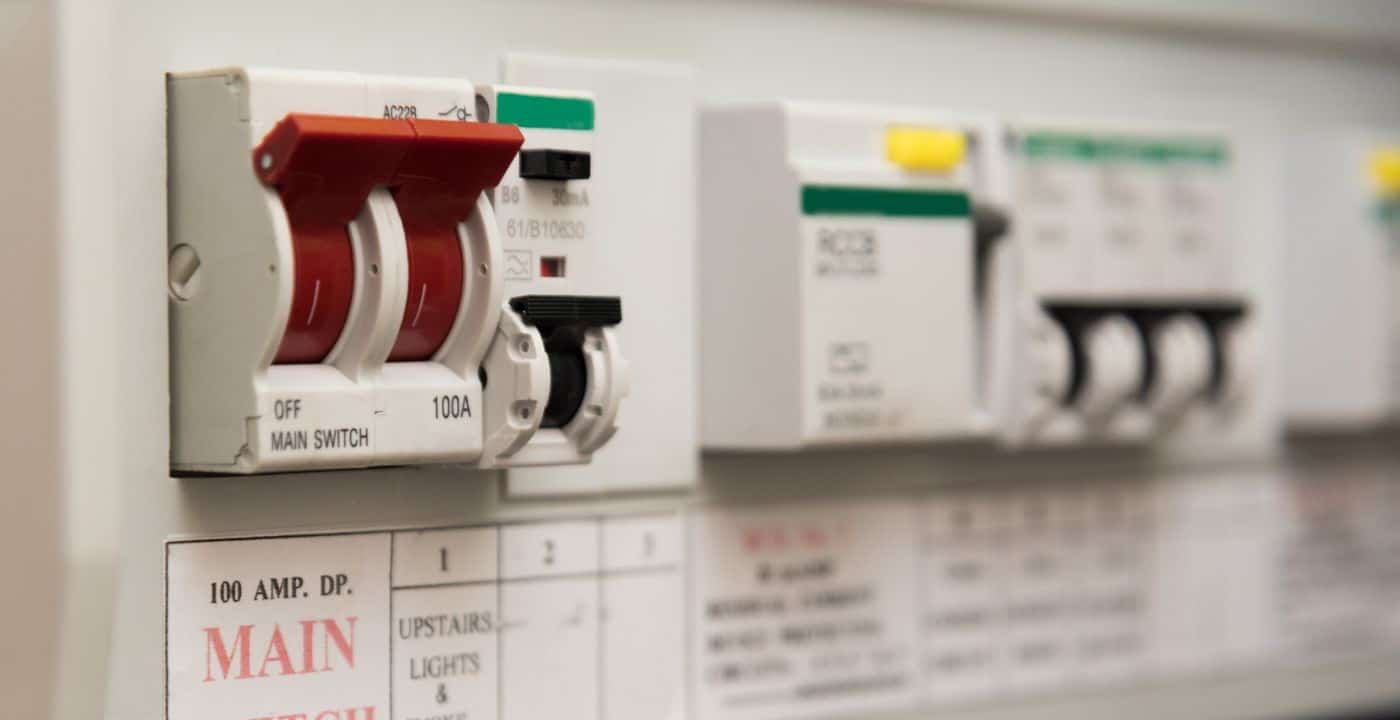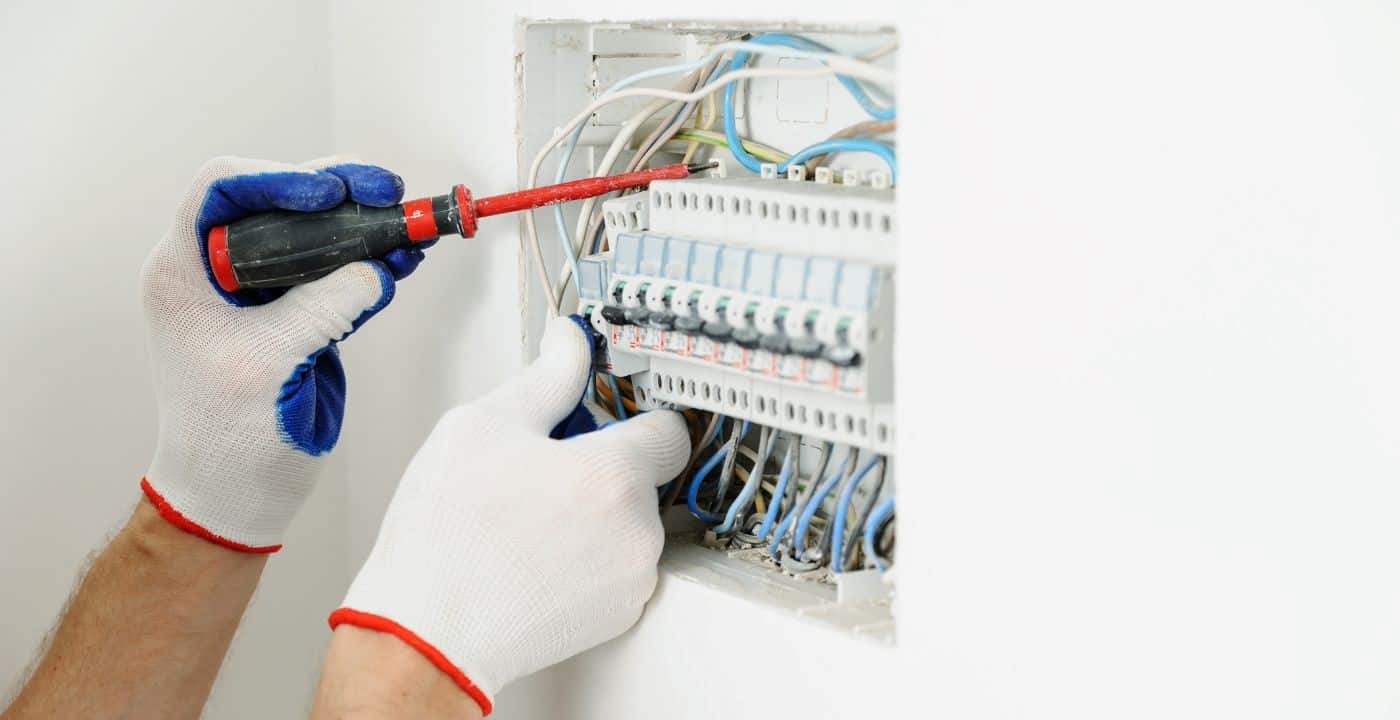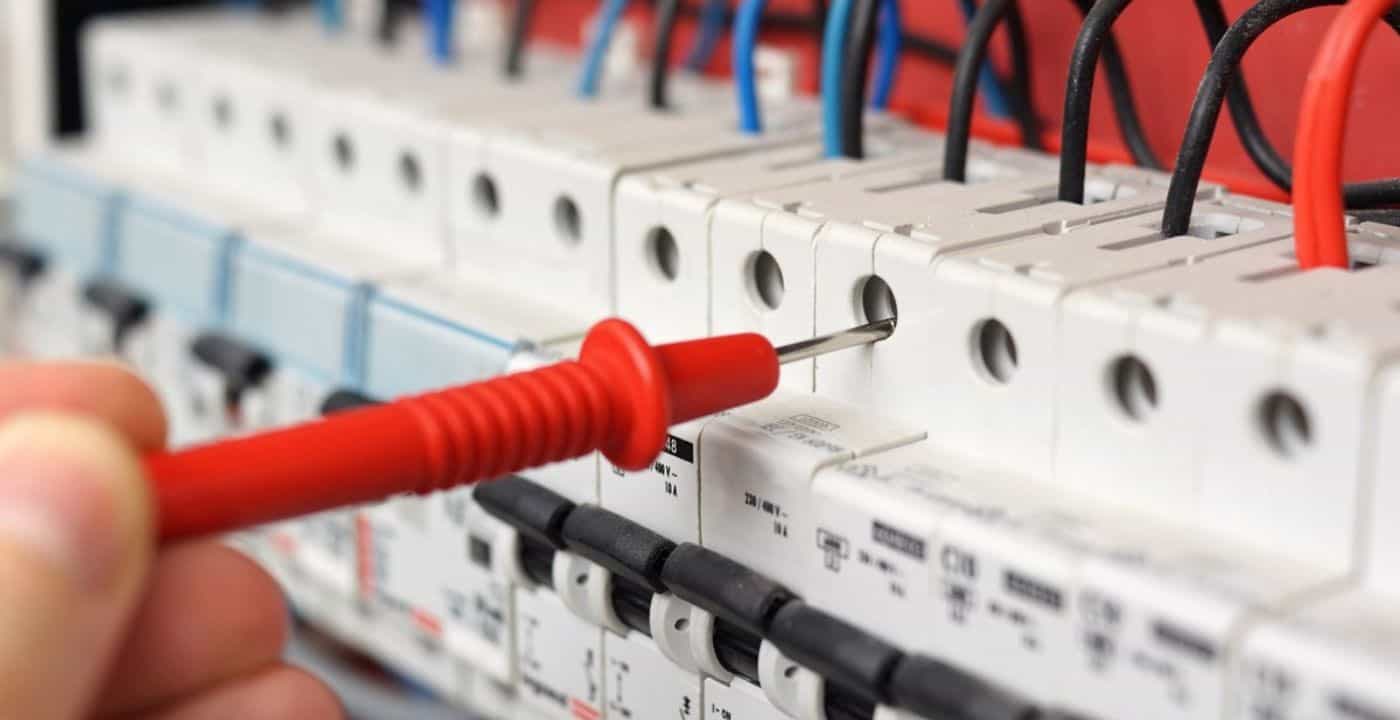Why should you replace a fuse box with a consumer unit?
In the realm of electrical installations, replacing a fuse box with a consumer unit stands as a significant upgrade. It’s a step towards enhanced safety, efficiency and compliance with modern regulations.
Fundamentally, a fuse box and a consumer unit serve the same purpose – safeguarding electrical circuits from overload, however, a consumer unit is more efficient, reliable and designed to protect against both overloads and short circuits.
Upgrading to a new consumer unit brings tangible benefits such as:
- greater safety
- simplified circuit identification
- ease of reset
- compliance with regulations
- increased capacity
- better energy efficiency
- RCBO protection
- surge protection
- reduced fire risk
What are the differences between a fuse box and a consumer unit?
Both serve as the central hub for a property’s electrical supply, yet, they differ in design, operation and safety standards.
A consumer unit replacement not only promises better protection but also a smoother user experience compared to traditional fuse boxes.
Here are some of the key differences:
| Fuse Box | Consumer Unit | |
| Design | Contains fuse wires for different circuits | Contains circuit breakers and sometimes RCDs (Residual Current Devices) |
| Safety | Offers basic protection against overloads | Provides protection against overloads and short circuits |
| Ease of Use | Requires replacement of fuse wire after a trip | Allows easy reset of circuit breakers after a trip |
Types of consumer units
There are several types of consumer units available on the market, catering to different needs and regulations. Some of the most commonly used ones include:
- main switch consumer units
- split load consumer units
- dual RCD consumer units
- garage consumer units
- RCBO consumer units
- high integrity consumer units
- 17th edition consumer units
- caravan consumer units
- shower consumer units
- commercial consumer units
What is the cost of replacing a fuse box?
The cost to replace a fuse box varies, depending on several factors, however, for a standard UK home, you can expect to pay roughly between £450 and £800 for a consumer unit installation according to https://mylocaltoolbox.co.uk/cost-guides/cost-to-replace-consumer-unit/ .
What can affect the fuse box installer costs?
The overall cost to replace a fuse box can be influenced by a multitude of factors, each contributing to the final bill in a different way. These include:
Size of your home
The dimensions and layout of your home play a significant role in determining the cost of replacing your fuse box with a consumer unit. Larger homes tend to have more rooms, which directly equates to more circuits that need protecting and with that a more extensive, expensive consumer unit as well as wiring is required. Similarly, houses with intricate layouts may require a more complex installation process, further driving up the cost.
Electrical inspection
When you replace a fuse box, an Electrical Installation Condition Report (EICR) is mandatory by UK law (including if you are a landlord), to assess the condition and standard of the electrical installation. The cost of this inspection can vary, primarily depending on the size of your property and the complexity of its electrical system.
Type of consumer unit
Not all consumer units come with the same price tag as the cost will vary depending on the type and brand of unit.
Age and condition of existing wiring
The age and condition of your home’s existing electrical wiring can also affect the consumer unit replacement cost. You can have a consumer unit without a rewire but if your wiring system is old or doesn’t meet the current electrical standards, you may need to rewire your property before installing a new consumer unit which significantly increases the value.
Labour costs
Labour charges can vary based on the electrician’s expertise, experience and regional norms. It is also worth noting that complex installations, which demand more time or special skills, will typically cost more in terms of labour.
Additional components
Depending on your specific electrical setup and requirements, you may need additional components such as surge protection devices, additional circuit breakers, or even a secondary consumer unit.
Local authority fees
If you choose to have your work signed off by local authorities instead of a registered electrician, you may incur a fee. The amount can vary from one local authority to another.
Removal of Asbestos
If the consumer unit is affixed to an asbestos containing board, there would be significant costs involved with the removal of the board by a licensed asbestos removal contractor.
How long does it take to replace an electrical consumer unit?
Replacing a fuse box with a consumer unit is not a quick task – it requires both skill and precision. On average, a fuse box upgrade to a consumer unit takes approximately one day to complete.
The process of installing a new consumer unit involves several steps that ensure a safe and successful transition from an old fuse box. We would not recommend changing your own consumer unit and fuse box as electrical work should be carried out by a qualified professional, but it is helpful to understand the process.
We detail what to expect below in our step-by-step guide:
- Initial inspection
Begin by conducting a thorough examination of your existing wiring system. This step identifies any potential issues, such as outdated wiring or non-compliance with current electrical regulations.
- Power shutdown
Next, completely shut down the power supply to ensure a safe working environment. This is typically done at the main power switch.
- Old fuse box disconnection
Proceed to carefully disconnect the old fuse box. This involves detaching all circuit wires from the box while keeping track of their original locations.
- New consumer unit installation
Mount the new consumer unit in the desired location, ensuring it’s easily accessible and at an approved height. Always follow the manufacturer’s instructions when installing the unit.
- Circuit connection
Connect all the circuits to the new unit. Remember to follow the same order as before, ensuring each wire connects to the correct circuit breaker.
- Initial testing
Carry out a preliminary test of the new consumer unit. This initial check ensures all connections are correct and the unit is functioning as expected.
- Electrical system power up
Restore power to the electrical system and perform a full system check. This involves testing all switches, outlets and devices to ensure they’re working properly.
- Final testing and certification
Engage a certified electrician to conduct final testing and ensure all circuits are correctly connected, protected and compliant with UK electrical regulations. Once the system is confirmed as safe, the electrician will issue an Electrical Installation Certificate.
Safety regulations for consumer unit replacement
The replacement of a consumer unit should always be in compliance with the UK’s electrical regulations. All electrical work in the UK is subject to the Building Regulations 2010, and you need an Electrical Installation Condition (EIC) Report for a consumer unit replacement.
It is important to note that consumer units must be mounted, from floor level, at a height of between 0.45m and 1.2m. In some instances, for example with an extension, you may need a second consumer unit installed.
Conclusion
Replacing a consumer unit is a significant, yet, worthwhile upgrade for homeowners. While it may involve initial costs and time, the benefits in terms of safety, efficiency and compliance with modern regulations justify this investment.
Always ensure to comply with safety regulations and hire a professional to carry out this task, securing the best outcome for your electrical system.













